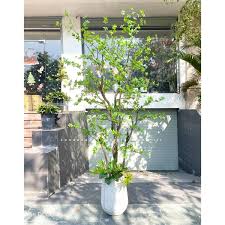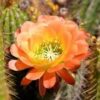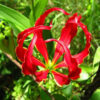Blue Willow China in Feng Shui: Enhancing Harmony and Prosperity in Your Home

Blue Willow China, with its intricate design and rich history, has long been admired for its aesthetic beauty and timeless appeal. The iconic blue-and-white pattern, which originated in the 18th century, depicts serene landscapes, pagodas, bridges, birds, and willow trees—elements that are highly regarded in Chinese culture. In the world of Feng Shui, the ancient Chinese art of arranging living spaces to promote harmony, health, and prosperity, Blue Willow China holds a special place. Its delicate motifs and soothing colors are not only visually appealing but also believed to have powerful energetic influences that can enhance the flow of positive chi (energy) within the home.
In this article, we will explore the significance of Blue Willow China in Feng Shui and how incorporating this iconic porcelain pattern into your home can improve the energy of your living spaces. From its symbolism to its impact on different areas of the home, Blue Willow China is more than just a beautiful decorative item—it can serve as a tool to enhance the balance, peace, and prosperity of your home.
1. The Historical and Cultural Significance of Blue Willow China
Before delving into its role in Feng Shui, it’s important to understand the origins and cultural significance of Blue Willow China. The Blue Willow pattern was created in the 18th century by British potters, drawing inspiration from Chinese porcelain designs. While the imagery itself is Westernized, it was designed to evoke the elegance and mystique of Chinese art and culture.
The pattern typically features a series of elements such as a pagoda, a willow tree, birds flying over a bridge, and a couple in love. These images are said to have been inspired by a love story that symbolizes devotion, loyalty, and the overcoming of obstacles. The willow tree, often central in the design, is known in Chinese culture for its symbolism of flexibility and resilience. In Feng Shui, these elements have a deeper significance, contributing to the balance and positive energy of a space.
2. Feng Shui and the Flow of Chi (Energy)
Feng Shui is an ancient Chinese practice that involves arranging living spaces to promote the free flow of chi, or life energy. Chi is thought to be the vital force that animates all living things, and its flow is crucial to the overall health, well-being, and success of a household. In Feng Shui, every item in the home—furniture, artwork, colors, and even dinnerware—has an impact on the flow of chi.
The idea behind Feng Shui is that certain elements can either support or hinder the flow of chi. By thoughtfully placing items that promote positive energy, you can enhance the harmony, tranquility, and prosperity in your home. Blue Willow China, with its calming colors, intricate patterns, and symbolic elements, is believed to influence chi in favorable ways.
3. Symbolism of Blue Willow China in Feng Shui
In Feng Shui, symbolism plays a significant role in determining how objects and designs influence energy. The design elements in Blue Willow China have specific meanings that can affect different areas of the home and the lives of the people within it.
- The Willow Tree: The willow tree is an important symbol in both Chinese culture and Feng Shui. Known for its graceful, flowing branches, it represents flexibility, resilience, and adaptability. In the context of Feng Shui, the willow tree promotes a sense of calm and tranquility. It is believed to help remove obstacles, allowing for smoother transitions in life and fostering emotional healing.
- The Birds: Birds, especially cranes, are considered symbols of longevity, freedom, and good fortune in Feng Shui. In the Blue Willow pattern, birds flying over the water signify the potential for positive change, new beginnings, and transformation. Birds are often associated with the element of air, which brings mental clarity and fresh perspectives, both of which are important for achieving success and personal growth.
- The Bridge: The bridge is a symbol of connection, transition, and movement. In Feng Shui, bridges represent the ability to overcome challenges and reach your goals. The imagery of a bridge in Blue Willow China serves as a reminder that obstacles can be crossed, and progress is achievable. It is especially powerful when placed in areas related to personal growth, relationships, or career development.
- The Pagoda: The pagoda is a symbol of protection, wisdom, and spiritual growth in Feng Shui. Its strong, upward-reaching structure represents stability and support. In Blue Willow China, the pagoda can be a symbol of nurturing the spiritual life and maintaining a peaceful and secure environment. It is particularly beneficial when placed in areas related to personal development and family harmony.
4. Using Blue Willow China to Enhance Specific Areas of the Home
Feng Shui divides the home into nine areas, each associated with a different aspect of life—wealth, career, health, relationships, and more. The thoughtful placement of Blue Willow China in specific areas of your home can enhance positive chi and improve the corresponding area of your life. Below are some Feng Shui recommendations for incorporating Blue Willow China into your home.
Wealth and Abundance (Southeast Area)
The southeast area of your home is associated with wealth and prosperity. To enhance the flow of financial abundance, place Blue Willow China pieces, such as plates, bowls, or decorative vases, in the southeast corner of your home or office. The calming blue color of Blue Willow is associated with the water element, which is believed to nurture wealth and encourage financial flow. The bridge in the Blue Willow design is also symbolic of crossing into new opportunities, making it particularly useful in this area.
Love and Relationships (Southwest Area)
The southwest area of your home is linked to love, marriage, and relationships. To invite harmony and positive energy into your romantic life, display Blue Willow China pieces in this part of the home. The serene and peaceful imagery of the birds and the willow tree can promote emotional healing and stability in relationships. If you’re seeking a deeper connection with a partner, the Blue Willow design can serve as a visual reminder of devotion and the importance of loyalty in relationships.
Career and Success (North Area)
The north area of your home corresponds to career, achievements, and public reputation. Placing Blue Willow China in the north part of your home, especially near your workspace or home office, can encourage professional growth and success. The pagoda in the design symbolizes stability and protection, which are essential for building a solid foundation in your career. Additionally, the flowing water in the Blue Willow pattern can help maintain mental clarity and focus, which are crucial for career advancement.
Health and Wellness (Center of the Home)
The center of the home represents overall health and well-being. For a balanced, healthy life, place Blue Willow China in the central area of your home, such as a dining table or shelf. The flowing elements in the Blue Willow design, including the water and the willow tree, promote physical and emotional healing. The symbolism of a peaceful, harmonious environment created by the Blue Willow pattern can enhance the overall energy of the home, promoting vitality and good health for everyone living there.
Family and Community (East Area)
The east area of the home is associated with family, community, and personal growth. To encourage family harmony and strengthen connections, incorporate Blue Willow China into this space. The design’s themes of love and unity, embodied in the couple on the bridge, can foster a sense of togetherness and support. The willow tree, with its graceful and flexible branches, can help improve family dynamics by encouraging open communication and mutual understanding.
5. Blue Willow China in Feng Shui: Placement Tips
When incorporating Blue Willow China into your home based on Feng Shui principles, here are some general tips for maximizing its positive impact:
- Avoid Clutter: Ensure that Blue Willow China pieces are displayed in a clean, organized manner. Clutter can block the flow of chi and diminish the positive effects of Feng Shui. Keep surfaces clear and tidy to allow the energy to flow freely.
- Use Blue Willow in Pairs: In Feng Shui, the use of pairs symbolizes balance and harmony. For example, place two Blue Willow vases or two Blue Willow plates on a table or shelf to invite equilibrium and complementarity.
- Complement with Other Feng Shui Elements: Enhance the energy of Blue Willow China by pairing it with other Feng Shui elements. For example, place Blue Willow China in areas that also feature plants (wood element) or water features (water element) to strengthen its effects.
6. Conclusion
Blue Willow China, with its rich cultural history and symbolic design, holds a special place in the practice of Feng Shui. By carefully incorporating this beautiful porcelain pattern into different areas of your home, you can enhance the flow of positive chi, promote prosperity, and create a harmonious living space. Whether through its symbolism of flexibility, resilience, love, or protection, Blue Willow China offers a unique way to improve the energy of your home and bring about greater balance, peace, and success for you and your family.

